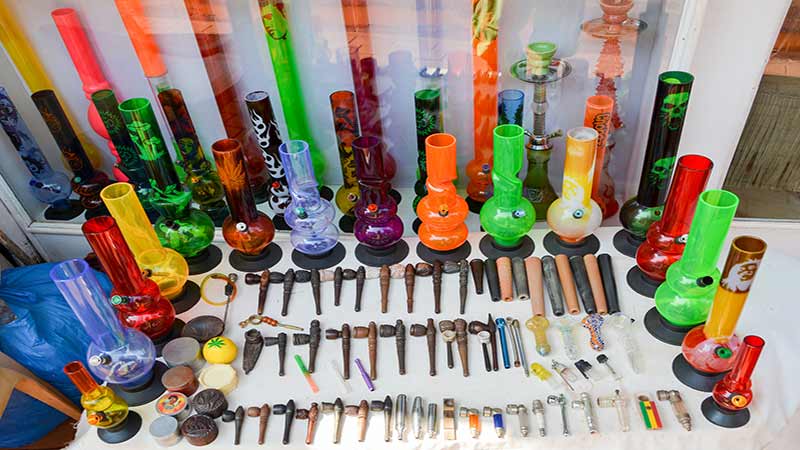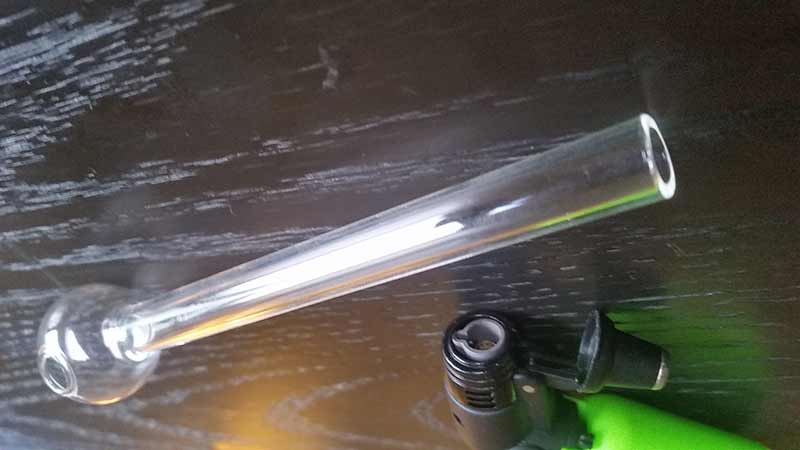Last updated : March 31, 2025
Judging from the image, it’s pretty obvious that many things qualify as a pipe. Believe it or not, even cardboard tubes can suffice. Granted, those types are generally reserved for teens or addicts who find themselves in a pinch. The question we need to ask, perhaps is what are these—often handmade—devices used for?
In short, they’re a means for drug users to obtain the high they were looking for when purchasing their drug of choice.
Pipes, edibles, and oils
Thirty-six states now allow the use of some form of medical marijuana. Moreover, half of those have legalized adult recreational marijuana use as well. Marijuana is sold in many forms. Edibles include gummies, brownies, and other delicacies. Oils and creams are sold on the market legally as well.
However, consumers who prefer smoking the drug use rolling papers, a pipe, or a bong. Virtually, any pipe can be used.
Bongs, otherwise known as water pipes, allow the smoke to pass through the water before being inhaled. It is said that using a water pipe enhances the user’s smoking experience because it cools the smoke before it reaches the lungs.
In the long run, though, drawing smoke into your lungs is a bad idea—even if you cool it off first. Smoking causes lung damage—it doesn’t matter what it is that you have in the pipe. Those who promote marijuana as a “safe” drug obviously aren’t looking at things from a long-range perspective.
Glass pipes
Small glass pipes, marketed for use when smoking marijuana, are sold in head shops across the country and come in many striking designs. They are normally small enough to fit in the palm of your hand and consist of a bowl for holding the pot which is attached to a short tubed section for drawing the smoke into the mouth.
Other drugs used with glass pipes are:
Crack cocaine
This stimulant is highly addictive and affects the area of the brain that releases dopamine. Users experience the effects of the drug immediately. However, the high is short-lived, so if the user wants to maintain their high, they must use more of the drug. Too much, too soon, of course, results in an overdose.
Crack pipes have a distinct shape. Typically, they are long, straight tubes of glass that have a bulb at one end. Drugs are heated in the bulb before drawing the smoke through the tube. They’re sold to the public as “oil burners.” Moreover, users sometimes make their own crack pipes using household items such as pens or even light bulbs! These pipes are illegal in many parts of the country. Being caught with one in your possession could lead to a “possession of drug paraphernalia” charge.
Methamphetamine or crystal meth
Meth users don’t hesitate to use one of the pipes pictured above. However, they’ll also use a glass tube as a pipe. Users place a piece of mesh screen in one end of the tube and inhale from the other. Smoking meth leaves a burnt streak on the glass that appears a yellowish color.
Methamphetamine is addictive. Users experience a sense of being extremely alert and in tune with what’s going on around them. They’re also awake for long periods of time. Short-term side effects include seizures, chest pain, high blood pressure, paranoia, and agitation.
Phencyclidine (PCP)
PCP is also known as angel dust. It’s sometimes sprinkled over marijuana and rolled into a joint. Other users smoke it through a pipe—they don’t care what it’s made of or how it looks. Any pipe will do.
They’re just looking for a way to get things rolling. PCP alters reality for users causing them to experience hallucinations.
Users begin to feel the effects of this drug almost immediately after inhaling it. It causes intense mood swings due to changes in the brain chemicals that are responsible for regulating mood. It should come with a sash for users to wear while under the influence as a warning to others around them.
Why?
The hallucinations can be intense causing violent, erratic behavior without warning. And it can take up to 24 hours to return to a normal state of mind.
Side effects, in addition to the hallucinations, include:
- Chills
- Sweating
- Rigid muscles
- Slurred speech
- Nausea
- Vomiting
- Low blood pressure
- Loss of coordination
Mental side-effects connected to PCP use are:
- Anxiety
- Agitation
- Irritation
- Delusions
- Mood swings
A hidden peril
Today, most drugs contain amounts of the synthetic opioid, fentanyl—unbeknownst to the user. It is extremely potent and, thus, coming into contact with even a small amount of the drug can be deadly. Dealers mix it into other drugs for two reasons—
- Increasing the amount of their merchandise
- Adding an extra kick to the experience to encourage repeat business
However, the alarming number of overdose deaths in which fentanyl played a part, proves that to be a very poor business practice indeed.
Substance abuse often leads to addiction
If someone you know at work has a pipe—of any type—in their possession, they are likely to be abusing drugs of one type or another. While the jury is still out as to whether or not marijuana is an addictive substance, it is habit-forming. And, once formed, habits can be hard to break. Meanwhile, smoking marijuana can eventually lead to respiratory issues—and possibly have other long-term effects on the body.
Crack cocaine, PCP, and methamphetamine can cause someone to form an addiction to them rather quickly. That’s because the brain quickly forms a tolerance to the drug. In other words, it accepts the feelings associated with having the drug in the system as being normal. When it’s not present, the brain starts looking for it, sending distress signals if you will. We know them as withdrawal symptoms.
Rather than dealing with the unpleasant, and sometimes life-threatening, symptoms of withdrawing from the drug, many people seek it out as soon as possible to find relief.
If you suspect someone is using drugs in the workplace, report it to your supervisor. Drug use inhibits someone’s ability to think clearly. They may also be uncoordinated and trip over something or into someone. Either of these things can cause an accident and someone could be seriously hurt.
Providing a safe environment is a business owner’s top priority. Help them do their job right.


